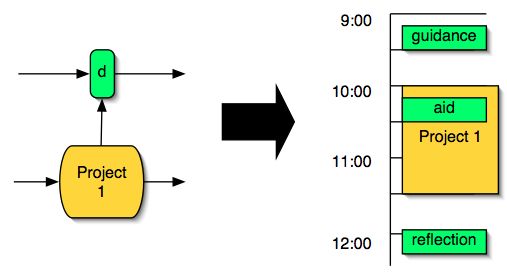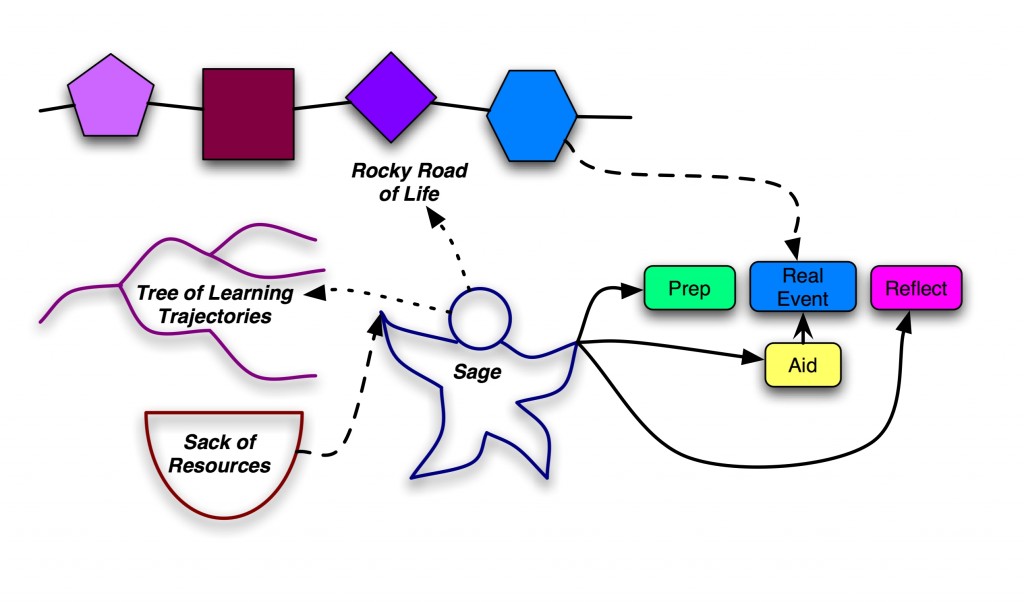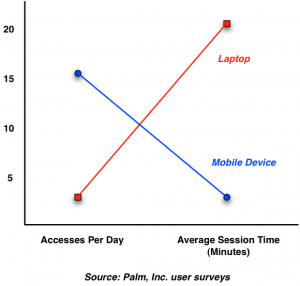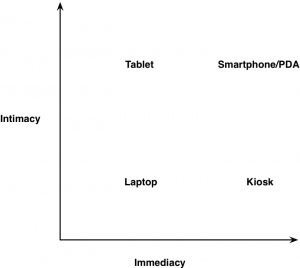This is a longer post launching my week in the #change11 MOOC (Massively Open Online Course).
Our formal learning approaches too often don‘t follow how our brains really work. We have magic now; we can summon up powerful programs to do our bidding, gaze through webcams across distances, and bring anyone and anything to pretty much anywhere. Our limitations are no longer the technology, but our imaginations. The question is, what are we, and should be, doing with this technology?
I like to look at this a couple of ways. For one, I like to ask myself “what would my ideal learning situation be”
Stop and ask yourself that. Go ahead, I‘ll wait. And feel free to share!
For me, that would be having a personal mentor traveling with me, looking at my tasks, providing both support in the moment, and developing me slowly over time. I talked about how we might systematize that in a post titled Sage at the Side. I also talked about this model as Layered Learning. That is, layering on learning across our life.
It‘s part of what my colleague Harold Jarche talks about when saying “work is learning and learning is workâ€, the notion that as organizations start empowering workers to adapt to the increasing complexity, there will be no difference between work and learning, and we‘ll have to move away from the ‘event‘ model of learning and start integrating learning more closely into our activities. We‘ll need to have a closer coupling between our activities and the resources, creating what Jay Cross calls a workscape and I‘ve termed the performance ecosystem. That is, having the tools to hand, including job aids, people, and skill development, but in a more systemic way.
Think about that: how would you construct an optimal performance environment for yourself? What would it look like? Again, feel free to share.
Would it look like an LMS over here, training away over there, job aids scattered across portals, and social networks hierarchically structured or completely banned? Would you have spray-and-pray (aka show up and throw up) training? Online courses that are clicky-clicky bling-bling? Resources accessible by the way the organization is siloed? Even the simple and well-documented matter of spaced learning is largely violated in most of the learning interventions we propagate. In short, all of this is in conflict with how the human brain works!
Look at how how we learn naturally, before schooling (what I call the 7 C‘s of natural learning). We see that we learn by being engaged in meaningful activity, and working with others. It‘s not about knowledge dump and test, but instead about coupling engaged activity with reflection. I like Collins, Brown, & Holum‘s Cognitive Apprenticeship as a model for thinking more richly about learning. Other learning models are not static (c.f. Merrill‘s trajectory through CDT to ID2 to Ripples), and I believe they‘ll converge where Cognitive Apprenticeship is (albeit perhaps my slightly adulterated version thereof). It talks about modeling, scaffolding and release, naturally incorporating social and meaningful activity into the learning process.
Taking a broader look, too many of our systems have a limited suite of solutions to choose from, and ignore a number of features that we need. The ADDIE process assumes a course, and still doesn‘t have any real support for the emotional engagement aspect. A step above is the HPT approach, which does look at the learning need and checks to see whether the solution might be a course, a job aid, realigning incentives, or some other things. However, it still doesn‘t consider, really, engagement, nor does an adequate job of considering when connecting to a person is a more valuable solution than designing content.
And while Gloria Gery‘s seminal work on Electronic Performance Support Systems suggested that these systems could not only provide support in the moment but also develop the learners‘ understanding, I still don‘t see this in any systems in practice. Even GPSs don‘t help you understand the area, they just get you where you‘re trying to go. So we are still missing something.
I‘m really arguing for the need to come up with a broader perspective on learning. I‘ve been calling it learning experience design, but really it‘s more. It‘s a combination of performance support and learning (and it‘s badly in need of some branding help). The notion is a sort-of personal GPS for your knowledge work. It‘s knows where you want to go (since you told it), and it knows where you are geographically and semantically (via GPS and your calendar), and as it recognizes the context it can provide not only support in the moment, but layers on learning along the way. And I think that we don‘t know really how to look at things this way yet; we don‘t have design models (to think about the experience conceptually), we don‘t have design processes (to go from goal to solution), and we don‘t have tools (to deliver this integrated experience). Yet the limits are not technological; we have the ability to build the systems if we can conceptualize the needed framework.
I think this framework will need to start with considering the experience design, what is the flow of information and activity that will help develop the learner (e.g. “If you get the design right, there are lots of ways to implement itâ€). Then we can get into the mechanics of how to distribute the experience across devices, information, people, etc. But this is embryonic yet, I welcome your thoughts!
Really, I‘m looking to start matching our technology more closely to our brains. Taking a page from the slow movement (e.g. slow X, where X = food, sex, travel, …), I‘m talking about slow learning, where we start distributing our learning in ways that match the ways in which our brains work: meaningfulness, activation and reactivation, not separate but wrapped around our lives, etc.
There‘s lots more: addressing the epistemology of learners, mobile technologies, meta-learning & 21st C skills, and deep analytics and semantic systems, to name a few, but I think we need to start with the right conceptions. Some of my notions of design may be too didactic, after all, and we‘ll need to couple information augmentation with meaning-making to make real progress, but I think this notion of stepping back and reflecting on what we might want to achieve and where we‘re currently inadequate is an initial step.
And now the initiative is over to you. I look forward to your thoughts.
Readings
Collins, A., Brown, J.S., and Holum, A. (1991). . Cognitive Apprenticeship: Making Thinking Visible. American Educator, Winter.
Quinn, C. (2004). Learning at Large. Educational Technology, 44, 4, 45-49.
Quinn, C. (2009). Populating the LearnScape: e-Learning as Strategy. In M. Allen (Ed.) Michael Allen‘s eLearning Annual 2009. Pfeiffer, San Francisco.
Quinn, C. (2010). Rethinking eLearning. Learning Solutions Magazine. April.
Quinn, C. (2010). Designing for an uncertain world. Learnlets. April.
Thalheimer, W. (2006). Spacing Learning Over Time. Work Learning Research.




